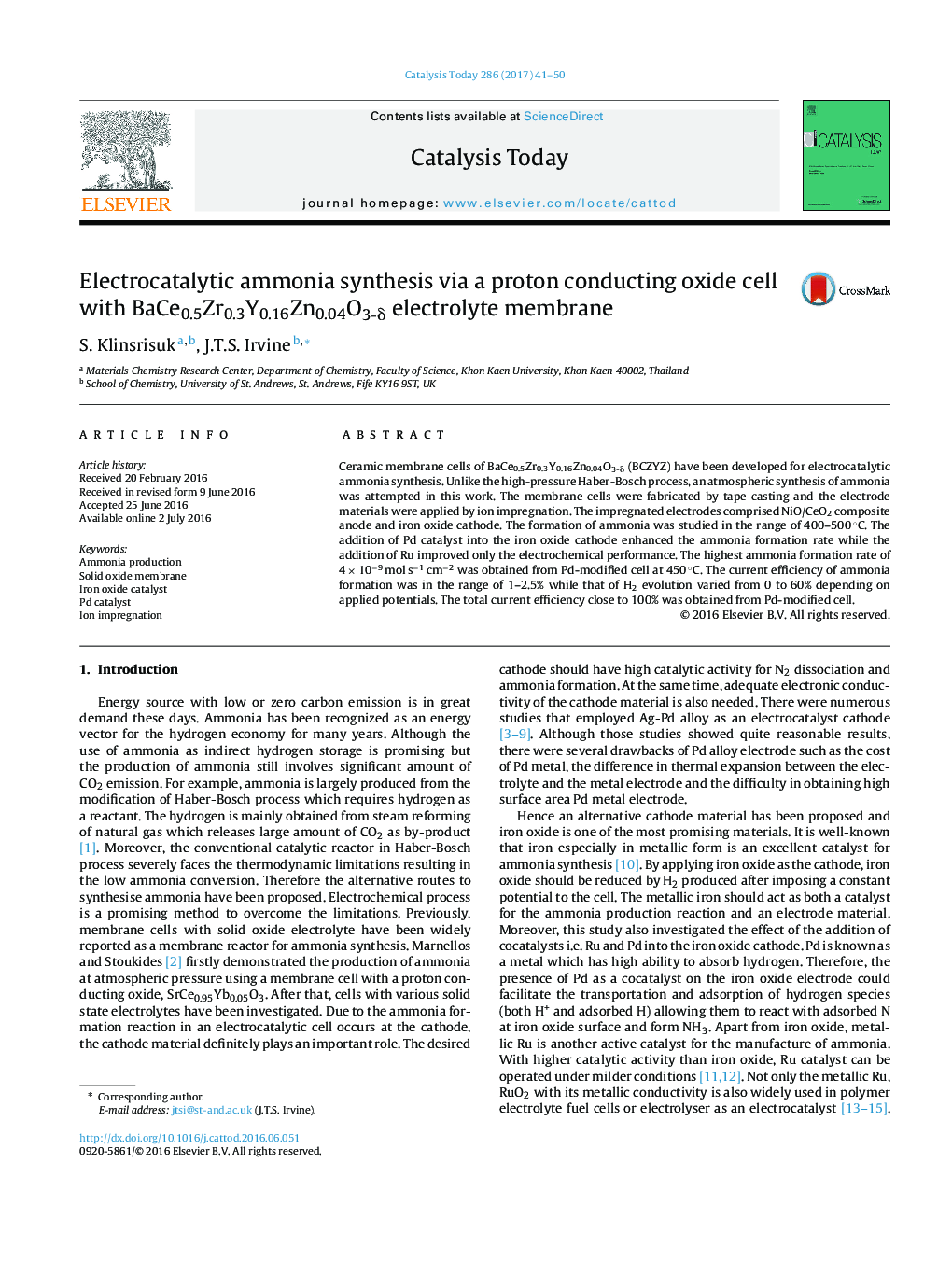| Article ID | Journal | Published Year | Pages | File Type |
|---|---|---|---|---|
| 6455295 | Catalysis Today | 2017 | 10 Pages |
â¢BaCe0.5Zr0.3Y0.16Zn0.04O3-δ (BCZYZ) membranes for electrocatalytic ammonia synthesis.â¢Pd catalyst on iron oxide electrode enhanced formation rate.â¢Ru addition improved only the electrochemical performance.â¢The highest ammonia formation rate of 4 Ã 10â9 molsâ1 cmâ2 on Pd-at 450 °C.â¢Formation of ammonia consumed around 1-2.5% of applied current.
Ceramic membrane cells of BaCe0.5Zr0.3Y0.16Zn0.04O3-δ (BCZYZ) have been developed for electrocatalytic ammonia synthesis. Unlike the high-pressure Haber-Bosch process, an atmospheric synthesis of ammonia was attempted in this work. The membrane cells were fabricated by tape casting and the electrode materials were applied by ion impregnation. The impregnated electrodes comprised NiO/CeO2 composite anode and iron oxide cathode. The formation of ammonia was studied in the range of 400-500 °C. The addition of Pd catalyst into the iron oxide cathode enhanced the ammonia formation rate while the addition of Ru improved only the electrochemical performance. The highest ammonia formation rate of 4 Ã 10â9 mol sâ1 cmâ2 was obtained from Pd-modified cell at 450 °C. The current efficiency of ammonia formation was in the range of 1-2.5% while that of H2 evolution varied from 0 to 60% depending on applied potentials. The total current efficiency close to 100% was obtained from Pd-modified cell.
Graphical abstractDownload high-res image (212KB)Download full-size image
